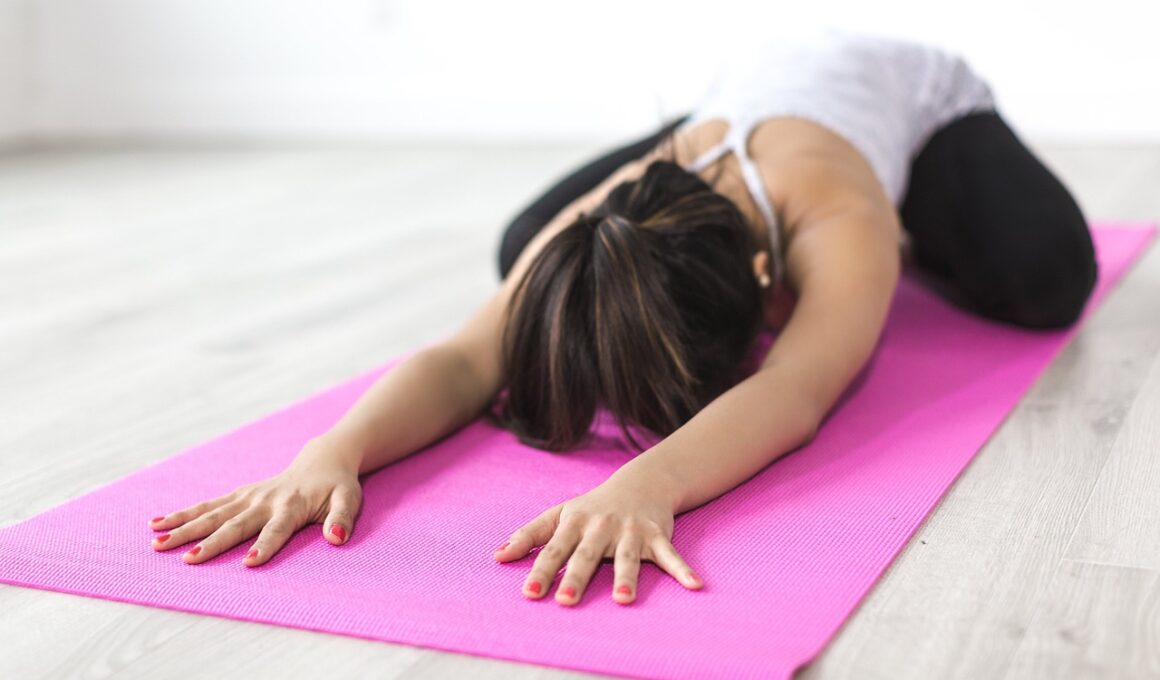Flexibility Exercises to Combat Seasonal Aches and Pains
As the seasons change, many individuals experience new types of aches and pains that can stem from fluctuations in temperature and humidity. One effective way to combat these discomforts is through targeted flexibility exercises aimed at enhancing mobility and reducing stiffness. By incorporating specific routines into your weekly regimen, you can improve your body’s capacity to handle the stress associated with seasonal transitions. Enjoying increased flexibility not only alleviates pain but also aids in maintaining overall physical health. Aim to dedicate at least twenty to thirty minutes per day for these stretching routines, which can be done in the comfort of your home or local gym. Regular practice will enable your muscles to stay limber and responsive, ultimately allowing you to enjoy other physical activities that might typically be hindered by chronic tightness. Seasonal changes might impact levels of motivation and energy, yet sticking to a consistent routine can provide you with a foundation for resilience. To action this, select exercises that you find enjoyable and engaging as these will help keep you committed to improving your flexibility throughout the year.
Essential Flexibility Routine Components
When devising your flexibility routine, it’s crucial to include a variety of exercises that focus on different muscle groups. Here are some key components to incorporate:
- Static Stretches: Hold each stretch for at least 15-30 seconds to facilitate lengthening and relaxation of the muscle fibers.
- Dynamic Stretches: Incorporate movements that gently increase your range of motion over time, promoting overall mobility.
- Foam Rolling: Self-myofascial release techniques can alleviate tension and knots in the muscles, improving flexibility and reducing soreness.
- Breathing Exercises: Focus on deep, controlled breathing to help relax the body and enhance the effectiveness of each stretch.
Including a variety of these components will ensure a well-rounded routine that targets all areas of the body effectively. Additionally, remember to consider your personal fitness level and adjust the intensity of each exercise accordingly to avoid injuries. Consistency is key to success, so establish a schedule that aligns with your lifestyle.
Incorporating basic warm-up exercises before engaging in flexibility routines is a great strategy. Warming up prepares the muscles for the stretches that follow and reduces the likelihood of injury. Five to ten minutes of light cardio, such as brisk walking or gentle cycling, can elevate your heart rate and increase blood flow to your muscles, making them more pliable. Once warmed up, focus on gradually introducing dynamic stretches, such as trunk rotations or arm circles, which actively engage muscle groups and joints. These movements effectively promote flexibility while simultaneously enhancing strength. When you feel ready, transition into static stretches to promote deeper tissue lengthening. Remember to listen to your body and avoid overstretching which can lead to strains and discomfort. Being mindful of how your body responds allows you to adapt your routine as needed. Integrating proper warm-up techniques fosters an enjoyable experience and maintains motivation over time. Seasonal fitness routines do not have to feel monotonous; instead, treat each session as an opportunity to explore what feels right for your body while working towards overall wellness.
Targeting Common Seasonal Issues
During transitional seasons, individuals frequently encounter specific areas of tightness contributing to discomfort, particularly in the lower back, hips, and shoulders. Addressing these issues with appropriate flexibility exercises can significantly enhance physical well-being. The standing quad stretch, for example, effectively targets hip flexors which often stiffen with decreased activity levels during colder months. To target shoulder tension, consider incorporating the doorway chest stretch, which opens up the shoulders and chest, alleviating tightness. Additionally, the seated forward bend and standing hamstring stretch are fantastic for loosening tightness in the lower back and hamstrings. Incorporating a balance of these targeted stretches provides comprehensive relief and enhances mobility. It is important to recognize that everyone’s body is different; tailor your routine based on personal preferences and specific pain points. To further enrich your routine, consider setting up a stretching calendar to keep track of your progress and ensure consistent practice. Engaging in such specific and focused types of stretches provides great relief and contributes to your overall flexibility and strength.
Hydration plays a crucial role in maintaining body flexibility, especially during the changing seasons. Seasonal variations in temperature can impact water intake, and adequate hydration is essential for muscle function and recovery. Keeping your body properly hydrated helps muscles maintain elasticity and reduces the risk of strains during exercise. Aim to drink at least eight glasses of water daily, and consider increasing your intake if you engage in regular exercise or live in a particularly dry climate. Additionally, consuming foods rich in water content, such as fruits and vegetables, can also aid in hydration. Regularly incorporating items like cucumbers, watermelon, or oranges into your diet will provide necessary nutrients and fluids. Additionally, consider practicing mindful hydration, which involves listening to your body’s cues and drinking water when you feel thirsty. Being proactive about hydration creates an optimal environment for your muscles, leading to improved flexibility efforts. A well-hydrated body can effectively perform dynamic movements, thus enhancing your overall fitness experience while minimizing seasonal-related issues associated with physical activity.
Creating a Sustainable Flexibility Habit
One of the most effective strategies for cultivating a long-term flexibility routine is creating a sustainable habit that you genuinely look forward to maintaining. Start by establishing realistic and attainable goals directed towards your flexibility journey. For instance, commit to a daily five to ten minute stretch session. Create a dedicated space in your home where you can practice and become accustomed to your stretching routine. Consistency is key, so consider setting reminders on your phone or utilizing motivational apps specifically designed to assist with fitness goals. Listening to uplifting music or following guided instructional videos can enhance your experience and make it enjoyable. Additionally, consider joining a local class or virtual group that focuses on flexibility, encouraging community and camaraderie. This social aspect can significantly boost your motivation as others encourage each other towards individual success. Keep track of your progress regularly, noting improvements in your flexibility over time. Celebrate small victories and adjust your goals as you grow. This approach to creating a sustainable flexibility habit will help you stay dedicated year-round.
Listening to your body while engaging in flexibility exercises is paramount for ensuring safety and effectiveness. It is important to differentiate between mild discomfort and pain; the latter may indicate that you might be pushing beyond your limits, risking injuries. Developing an awareness of your body’s tendencies allows you to know when to switch things up or take a break altogether. Incorporating active recovery days into your week is vital, ensuring your muscles have ample time to rest and recover. Utilize these active recovery days to engage in light activities such as walking, yoga, or swimming rather than intense workouts. Try to incorporate mindfulness techniques during your flexibility practices; focus on deep breathing and visualization to enhance your connection with your body. This mindfulness promotes patience, allowing gradual improvement without undue strain. Over time, practice will help illustrate progress, guiding you toward achieving your flexibility goals. Being respectful of your body’s limits while maintaining curiosity about new stretches creates a positive cycle of exploration and achievement throughout all seasons.
In summary, implementing a variety of flexibility routines can provide significant benefits in combating seasonal aches and pains. By thoughtfully examining your personal health requirements and preferences, you can develop a tailored stretching regimen that suits your lifestyle. Include warm-ups, targeted stretches, hydration strategies, and mindfulness practices to foster a thorough and complete approach to your flexibility routine. Also remember the importance of consistency and setting realistic goals throughout these transitory seasons. Over time, these practices will not only improve your overall flexibility but also enhance your quality of life, allowing you to enjoy physical activities that once seemed challenging. Share your experiences with friends and family to encourage a collective commitment to seasonal fitness. Starting a conversation regarding the importance of flexibility could inspire others to join your journey. Despite the possible challenges environmental changes may bring to your physical well-being, prioritizing flexibility routines can lead to a more active and vibrant lifestyle while reducing aches and pains associated with seasonality. Embrace each season confidently, fully equipped with the knowledge and tools necessary to enhance your flexibility and overall physical health.


